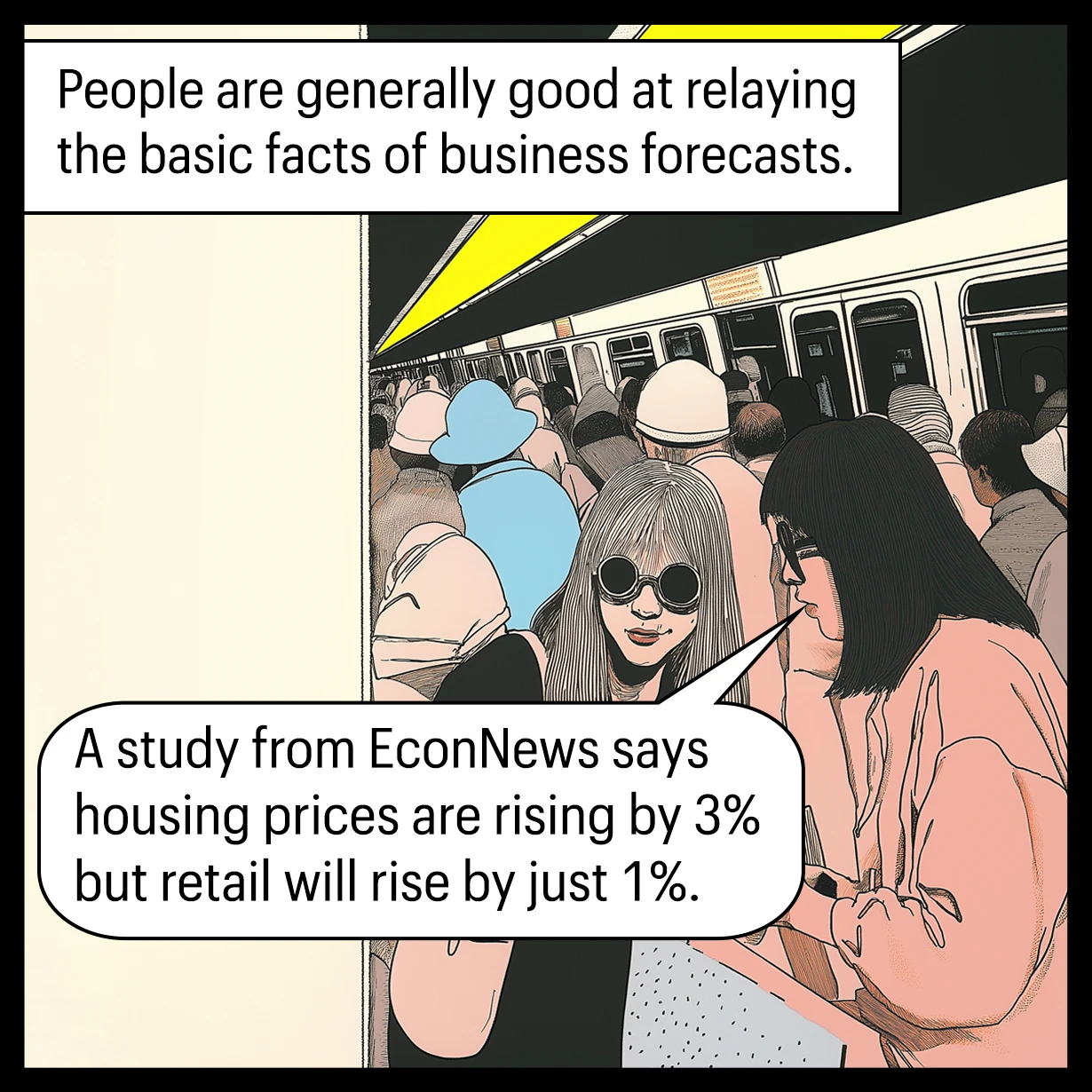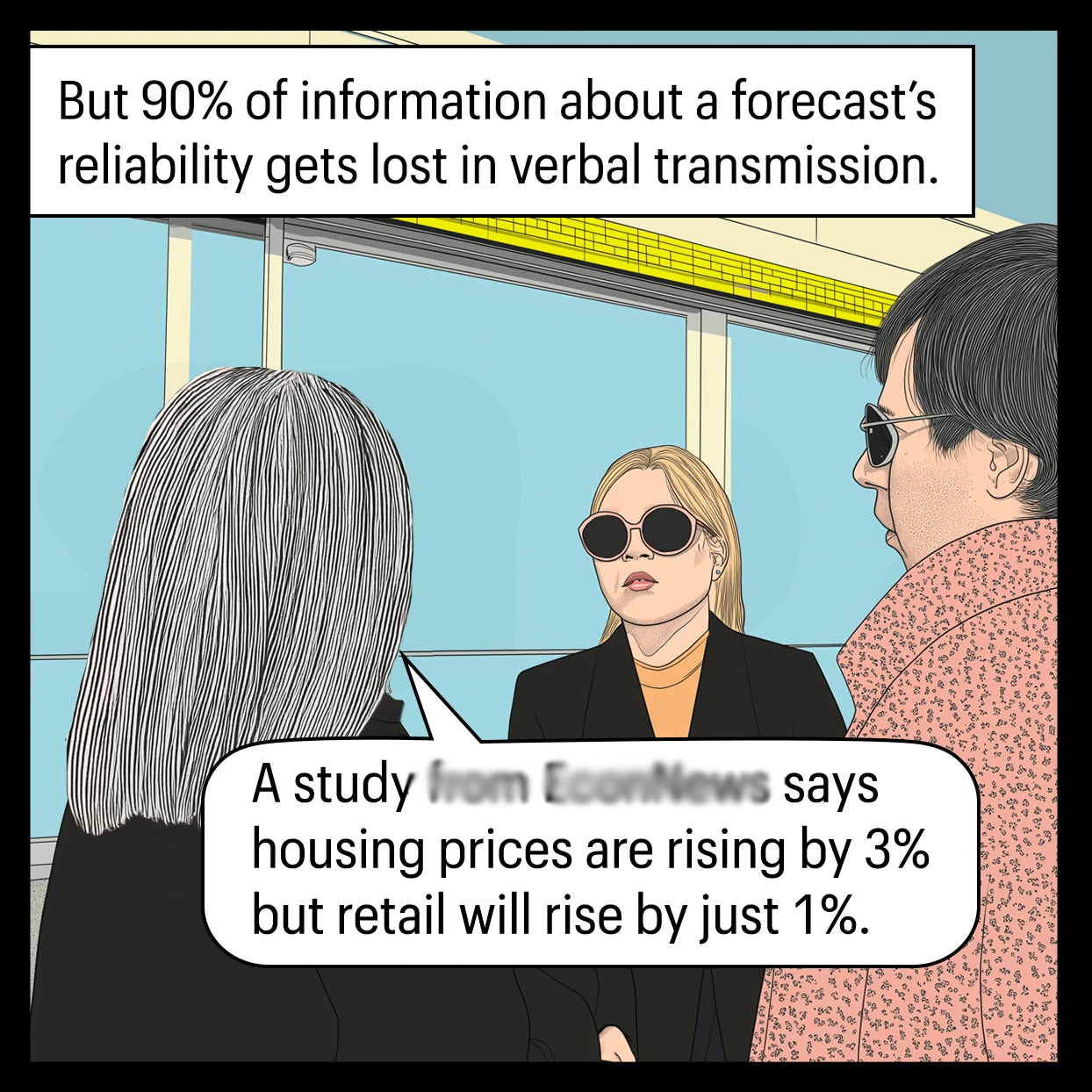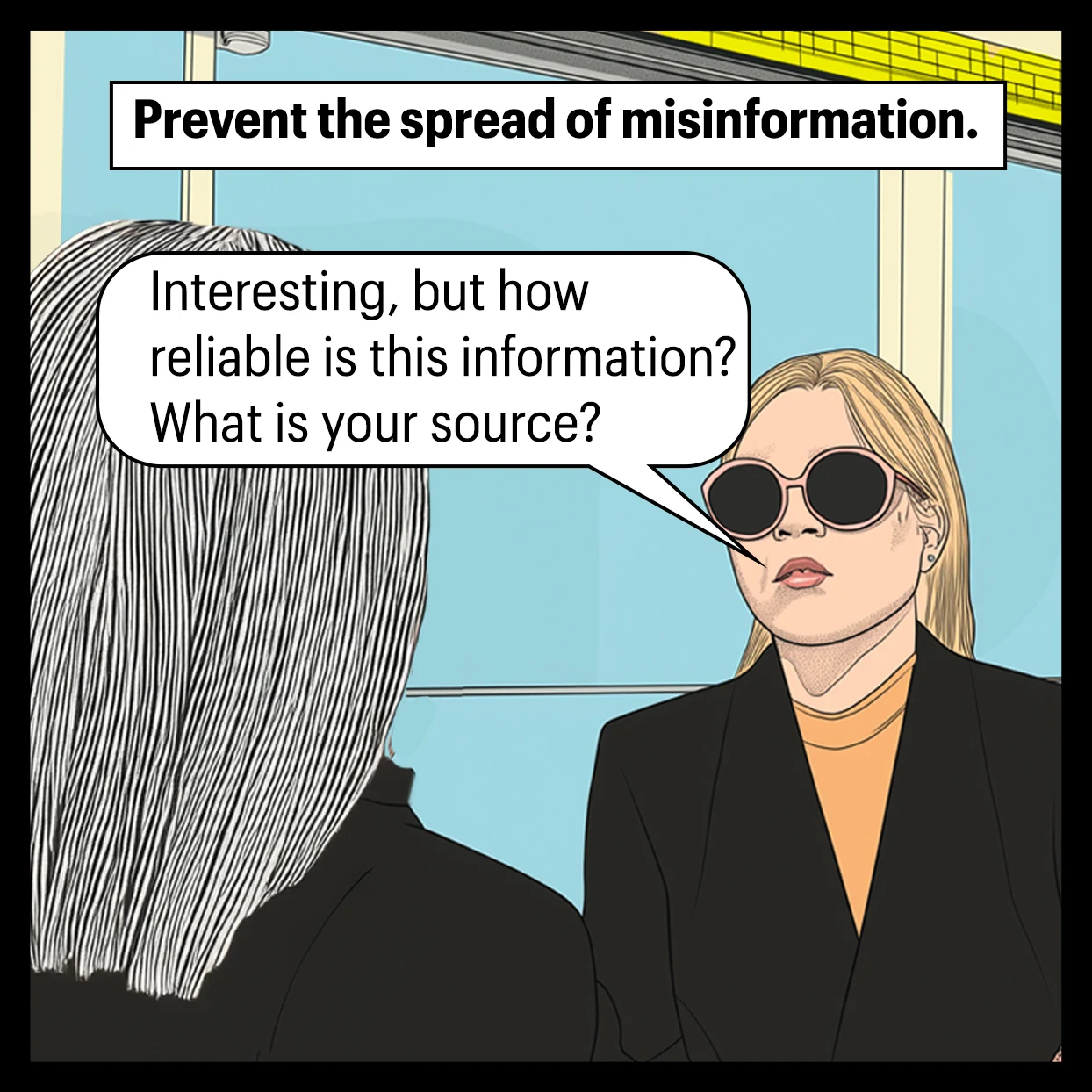How do you get your economic news?
Most people hear business forecasts by word-of-mouth, studies indicate. Yet almost all the time, people pass on forecasts without passing on information about the source or its reliability, recent research finds. While people are generally good at relaying basic facts, where the facts came from evaporates most of the time, says Harvard Business School Assistant Professor Thomas Graeber.
Graeber and colleagues conducted experiments involving more than 5,000 people who listened to and verbally passed on information about housing, retail prices, and sales. End-listeners were not able to discern basic facts about the reliability of the original forecasts—with some 90 percent of information about the original forecast’s reputability being lost in the verbal transmission process.
“When we tell someone else about what we've heard, what we've seen, or the information that we consumed, we usually just don't find it natural to give our own assessment of how reliable the information was,” Graeber says.
In an uncertain economy with tempering inflation, rising unemployment, and likely interest rate cuts, it’s easy to spread misinformation, Graeber notes. And with political rhetoric heated in a US election year, that can lead to further polarization, especially when it comes to the economy.
Graeber collaborated on the working paper, “Lost in Transmission,” with Shakked Noy, a doctoral candidate at the Massachusetts Institute of Technology, and Christopher Roth, a professor at the University of Cologne.
Beyond leaving a message
To parse what people omit in the communication chain, researchers first needed to figure out how to measure information loss in natural language, Graeber says.
Using the social science platform Prolific, the authors ran two main experiments in which 540 people transmitted messages to 1,510 listeners.
Transmissions were either about the housing market in New York City or retail information such as sales and product prices from Walmart. Participants weren’t given the name of the city or the store.
The researchers told transmitters—those who recorded their versions of the original facts—that one in 10 of them would be eligible for a $20 bonus tied to accurate transmission.
When the call is dropped
The incentive didn’t help. Almost all of the messages relayed by a transmitter’s recording included the bottom-line facts about a forecast or situation, such as whether sales went up or prices fell. However:
Only 30-45 percent of those recordings included information about the reliability of those facts, such as the source’s confidence, expertise, or evidence quality.
Even messages recorded by transmitters that did include source and reliability information weren’t fully absorbed into end-listeners’ assessments of reliability.
Graeber says the omissions weren’t deliberate. Rather, they likely resulted from memory constraints people run into when relaying information.
Sources matter
While policymakers can’t control the intermediaries who will relay economic information to the public, business leaders and managers can take steps to prevent misinformation from forming within their organizations.
Functions that must liaise with customers, like sales and service, often have to relay information to internal departments. The insight might be technical, gathered in a different language, or under stressful circumstances.
“They talk to the client directly, and then they have to transmit their insights to developers who change the product,” Graeber says.
New habits can help employees retain more valuable information from customer interactions. Graeber says pushing for clear statements about the reliability of the information being passed on—including its origin—may help.
“Create a culture of people being very explicit about the reliability of information, and the confidence they have in that information, into the statements they're making,” Graeber says.
Graeber says that organizations can shift their cultures by routinely questioning the source of assumptions and simply asking, “how reliable is this?”
“Specifics could make a difference,” Graeber says.




